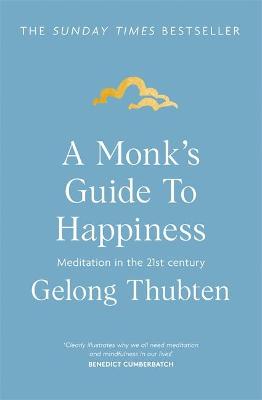
Descartes' first philosophy was called Meditations on First Philosophy. It was written in Latin. Later, it was translated into French. Descartes proved God existed and the immortality the soul in this treatise. The first publication of the work in Latin was in 1641. It wasn't until 1647, however, that it was available in English. Descartes' thoughts, despite being popular, are still not widely accepted today.
Rene Descartes in France wrote the first meditation. He had read the ideas of Aristotle but was unable accept them. He tried to come up with a better explanation of his ideas. But his efforts failed to yield any results. Meditations on First Philosophy was the result. It is the way it explains Descartes ideas that makes this book so captivating. The text contains many details about the nature and function of the mind.

The Fifth Meditation about the nature of matter addresses the question of God. To prove God's existence, the Meditator reverts to his previous conclusions. He also distinguishes between clear objects and objects that have a nature which is unclear. He continues to think about the definitions of mathematical objects. He then asks his self if existence can be defined as perfection. The answer to this question is no, but it certainly doesn't hurt.
Rene Descartes' third Meditation on First Philosophy is one of the most well-known books on the subject. This volume was narrated in French by a female author. Mihali's introduction challenges Descartes 'traditional' interpretation. She claims that Descartes' arguments are not circular. Instead, they mean that the essence is just an extension to the mind and that it is an extension to that essence.
The first Meditation on First Philosophy is the first in a series of works by Descartes. It is the second book on First Philosophy. It contains four sections: Selections of Objections, Replies, The Nature Of Man and Meditation on First Philosophy. It is a favourite text among students of philosophy. This book is a valuable resource for researchers and academics. The book also contains numerous citations from the original work.

The first Meditation on First Philosophy is a reflection on the relationship between the world and the universe. The second Meditations on First Philosophy are meditations in which you examine the meaning and reality. This meditation is divided into two parts. The first is about the concept of an 'independent being', and the second the concept of a 'dual being'. It blends both perspectives to provide a useful tool for understanding reality.
FAQ
Which lifestyle is best for your health?
You can live a healthier lifestyle if you eat healthy food and exercise regularly. You will live a long and happy life if you adhere to these guidelines.
Small changes to your diet or exercise routine can help you start losing weight. For example, if you want to lose weight, try walking for 30 minutes every day. Or, if you want to get more active, take up swimming or dancing. An online fitness program such as Strava or Fitbit that tracks your activity could be a good option.
How can I reduce my blood pressure
You must first determine the cause of high blood pressure. Next, you must determine the cause and take steps to decrease it. You can do this by eating less salt, losing weight, or taking medication.
Exercise is also important. Walking is a great alternative if you don't have the time or energy to exercise regularly.
If you're not happy with how much exercise you're doing, then you should consider joining a gym. You'll probably want to join a gym where there are other people who share your goals. It's easier to stick to an exercise routine when you know someone else is going to see you at the gym.
What is the difference between a virus and a bacterium?
A virus is an organism microscopic that can't reproduce outside its host cells. A bacterium is an organism that splits itself in two. Viruses are very small (about 20 nanometers) while bacteria are larger (up to 1 micron).
Viruses spread easily through contact with infected bodily tissues, such as saliva and urine, semen, vaginal secretions or pus. Bacteria can easily be spread from direct contact to contaminated surfaces and objects.
Viruses can get into our bodies through cuts and scrapes on the skin, bites, and other injuries. They can also enter the body through the mouth, nose, eyes and ears, vaginal, rectum or anus.
Bacteria can enter our bodies through wounds, cuts, scrapes, burns, insect stings, or other breaks in our skin. They may also be introduced into our bodies through food and water as well as soil, dirt, dust, and animals.
Both bacteria and viruses cause illness. But viruses can't multiply within their hosts. They can only infect living cells and cause illness.
Bacteria can spread within the host and cause illness. They can spread to other parts of our bodies. To kill them, we must use antibiotics.
Statistics
- Extra virgin olive oil may benefit heart health, as people who consume it have a lower risk for dying from heart attacks and strokes according to some evidence (57Trusted Source (healthline.com)
- According to the Physical Activity Guidelines for Americans, we should strive for at least 150 minutes of moderate intensity activity each week (54Trusted Source Smoking, harmful use of drugs, and alcohol abuse can all seriously negatively affect your health. (healthline.com)
- According to the 2020 Dietary Guidelines for Americans, a balanced diet high in fruits and vegetables, lean protein, low-fat dairy and whole grains is needed for optimal energy. (mayoclinichealthsystem.org)
- WHO recommends consuming less than 5% of total energy intake for additional health benefits. (who.int)
External Links
How To
What does the word "vitamin" mean?
Vitamins are organic compounds naturally found in food. Vitamins are essential for our bodies to absorb nutrients from the foods we eat. The body cannot make vitamins; therefore, they must be obtained from food.
There are two types vitamins: water soluble or fat soluble. Water-soluble vitamins dissolve in water easily. Some examples include vitamin C,B1 and B2 vitamins (thiamine), B2 and riboflavin, B3 and B6 vitamins (niacin), folic acids, biotin, pantothenic acids, and cholesterol. Fat soluble vitamins are stored in the liver and fatty tissue. Some examples include vitamin D and E, K, A and beta carotene.
Vitamins can be classified by their biological activity. There are eight major categories of vitamins.
-
A - essential for normal growth and maintenance of health.
-
C - vital for proper nerve function, and energy production.
-
D - Vital for healthy bones and teeth
-
E is needed for good reproduction and vision.
-
K - Essential for healthy muscles and nerves.
-
P - vital for building strong bones andteeth.
-
Q - Aids digestion and iron absorption
-
R - Red blood cells are made from red blood cells.
The recommended daily allowance (RDA), for vitamins, varies depending upon age, gender, or physical condition. RDA values are set by the U.S. Food and Drug Administration (FDA).
For adults over 19, the RDA for vitaminA is 400 micrograms per daily. Pregnant women require 600 micrograms daily to support fetal development. Children ages 1-8 require 900 micrograms per day. Infants under one year of age require 700 micrograms per day, but this amount decreases to 500 micrograms per day between 9 months and 12 months of age.
Children between the ages of 1-18 need 800 micrograms per daily for obesity, while children overweight require 1000 micrograms. Children underweight or obese will need 1200 mg per day.
Children between 4 and 8 years old with anemia will need 2200 micrograms daily of vitamin C.
2000 micrograms daily is required for adults over 50 to maintain their general health. Due to their increased nutrient needs, pregnant and breastfeeding women need 3000 micrograms daily.
Adults over 70 need 1500 micrograms daily, as they lose 10% of their muscle every ten years.
Women who are pregnant or lactating need more than the RDA. Pregnant woman need 4000 micrograms daily in pregnancy, and 2500 per day after childbirth. Breastfeeding moms need 5000 micrograms each day when breastmilk production occurs.